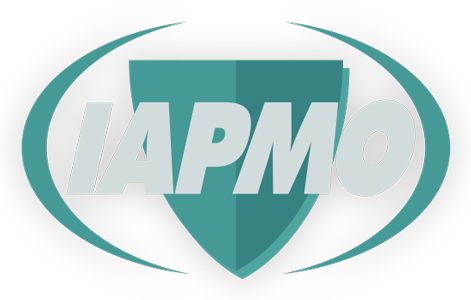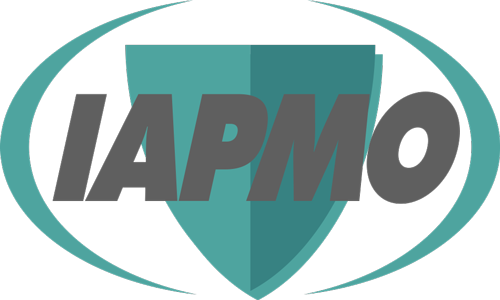Wildfire Resilience Toolkit
Toolkit for Resilient Community Rebuilding
Introduction to Fire
Wildfire is a powerful force that shapes much of the west’s landscapes, communities, and ecosystems. Managing and understanding wildfire risks and impacts is essential to protecting what matters most.
The Wildfire Resilience Toolkit is your go-to resource for preparedness, collaboration, and action. Whether you’re a homeowner, policymaker, or community leader, the Wildfire Resilience Toolkit is here to help you stay informed, empowered, and ready to take action.
Access grants, training opportunities, and actionable resources designed to equip you with the knowledge and support to help your community bounce back from wildfire damage.
Lessons from Paradise, CA
Part 1:
Overview of Challenges and Resilience
Overview of Challenges and Resilience
Part 2:
Core Challenges and Solutions
Core Challenges and Solutions
Part 3:
Strategies for Resilience
Strategies for Resilience
Part 4:
Practical Advice for Officials
Practical Advice for Officials
Part 1:
Overview of Challenges and Resilience
Key Lessons from the Camp Fire Disaster and Reconstruction
You are not alone. To bounce back from a wildfire disaster, not only are there resources to help your community rebuild, but there are others who have gone before that you can learn from. Check out the Official Magazine Article and Authority Podcast episodes on how Paradise, CA rebuilt from the Camp Fire Disaster.
Camp Fire Quick Notes:
- 80% of Paradise was destroyed in the Camp Fire (2019).
- About 48,000 people evacuated (Paradise and nearby areas).
- Major infrastructure failures: Power lines, narrow evacuation routes, damaged water systems.
- Officials like Tony Lindsey remained committed despite losing their homes.
Learn More about Wildfire Resiliency, Safety, Structural Assessments, and Community Rebuilding
- Official Magazine: Rebuilding Paradise
- Authority Plumbing and Mechanical Podcast: Rebuilding Paradise: Lessons in Plumbing Resilience After Catastrophic Wildfire
- The NFPA Podcast: The LA Wildfires
Part 2:
Core Challenges and Solutions
Related Training and Certification
According to NFPA, if your home or business is in an area at risk of wildfire, there are many steps you can take to protect your property from damage should a wildfire occur. NFPA has developed an online course to help you understand what those steps are and how you can reduce your risk.
Fire Safety and Prevention Standards
Ensuring fire safety is a critical aspect of protecting lives and property. A comprehensive understanding of fire prevention systems, retardant methods, sprinkler codes, and professional qualifications is essential for effective fire management. By adhering to established standards like NFPA guidelines and plumbing codes, professionals can implement reliable systems to safeguard against fire hazards in residential and commercial settings.
- Fire Prevention: dry chemical systems per NFPA 17 (Standards for Dry Chemical Extinguishing System).
- Retardant Systems: Airplane fire retardant systems, alternative method of water resources to fight fire.
- Fire Sprinklers Codes: Chapter 6 of the Uniform Plumbing Code, Section 612.0, Residential Fire Sprinkler Systems
- Fire Sprinklers Standards: NFPA 13 (Standard for the Installation of Sprinkler Systems); NFPA 13R (Standard for the Installation of Sprinkler Systems in Low-Rise Residential Occupancies); NFPA 13D (Standard for the Installation of Sprinkler Systems in One- and Two-Family Dwellings and Manufactured Homes)
- Fire Sprinklers Professional Qualifications: ASSE/IAPMO/ANSI Series 7000, Professional Qualifications Standard for Residential Potable Water Fire Sprinkler System Installers & Inspectors for One- and Two-Family Dwellings; ASSE/IAPMO/ANSI Series 15000, Professional Qualifications Standard for the Inspection, Testing and Maintenance of Water-Based Fire Protection Systems
- Firefighter Breathing Air Replenishment Systems: Uniform Plumbing Code, Appendix F
Water Infrastructure Challenges
Wildfire can cause water systems failure via melted pipes, depleted sources, and contamination. To rebuild your community with safety and affordability in mind, access actionable resources designed to equip you with first class knowledge and support.
To learn more about how wildfires affect water supplies, check out the following link: Wildfires: How Do They Affect Our Water Supplies? | US EPA
Resources
Ensuring the safety and reliability of water systems is a multifaceted process, especially in the aftermath of events like wildfires, which can severely impact infrastructure and water quality.
- Backflow prevention: Contamination can occur anywhere in a water system, from the utility piping to the piping in a home. Proper backflow prevention is key to making sure an issue in one building does not become an issue for the whole system. Check out the IAPMO Backflow Prevention Institute’s Website for helpful documents and training opportunities
- Water flushing: If water piping becomes contaminated, flushing is a keyway to removing contaminants. Whether it is unidirectional flushing or flushing out a building that has sat vacant due to an evacuation, there are a number of resources available to guide you.
- Removing VOC’s: Contamination of Drinking Water Distribution Systems
- Protecting Water Quality by Flushing: Distribution System Water Quality Protecting Water Quality Through Distribution System Flushing
- San Bernadino County Best Practices: Wildfire Best Practices for Water Systems
- IAPMO/AWWA Manual for Safe Closure and Reopening of Buildings: The Safe Closure and Reopening of Building Water Systems Manual
- Upgrading Tanks: Wildfire can cause contamination to enter drinking water system, so having methods to upgrade water tanks or private wells after a wildfire is vital.
- Considerations for Private Wells After Wildfire: Private Wells after a Wildfire
- Replacing Piping: Sometimes, wildfires cause water systems to be damaged beyond repair, leading to full system replacement. Understanding when that point is reached, and building back with improved methods and tools allows water purveyors to reduce costs associated with new construction.
- EPA Webinar on Wildfire Impacts on Water Infrastructure: Wildfire Impacts on Water Infrastructure
- o IAPMO Water Demand Calculator allows for right-sizing of water systems for residential occupancies and save construction costs: Water Demand Calculator
- Increasing the Pace and Scale of Community Wildfire Mitigation (Jim Pauley)
- Outthink Wildfire (Michele Steinberg)
- NFPA Wildfire Experts Answer FAQ
- NFPA Resources
- Los Angeles Department of Water and Power (LADWP) Wildfire Mitigation Plan
Part 3:
Strategies for Resilience
Recovery Planning
Wildfires are a growing concern for communities worldwide, as they increasingly threaten lives, homes, and ecosystems. Preparing for and recovering from such events requires coordinated efforts, effective planning, and proactive measures.
- Prioritize repopulation and basic services restoration
- Tailor plans using templates from past disasters.
- Wildfire Community Preparedness Day (May 3, 2025)
- How Will Your Community Prepare for Wildfires
Modern Standards
Adopt fire-resistant codes and underground utilities. Some example of fire resistant code and standards provisions:
- Uniform Plumbing Code (UPC), Section 612.0 (Residential Fire Sprinkler System): includes residential fire sprinklers including installation, pipe sizing and design, inspections and testing.
- Uniform Plumbing Code (UPC), Chapter 14 (Firestop Protection): includes provisions related to fire-resistant construction.
- Uniform Plumbing Code (UPC), Appendix F: includes provisions for Firefighter Breathing Air Replenishment Systems
- There are a number of standards that the UPC and UMC reference that relate to firestopping and fire prevention:
- NFPA 13R (Standard for the Installation of Sprinkler Systems in Low-Rise Residential Occupancies)
- NFPA 13D (Standard for the Installation of Sprinkler Systems in One- and Two-Family Dwellings and Manufactured Homes)
- NFPA 72 (National Fire Alarm and Signaling Code)
- NFPA 274 (Standard Test Method to Evaluate Fire Performance Characteristic of Pipe Insulation)
- NFPA 80 (Standard for Fire Doors and Other Opening Protectives)
- NFPA 501A (Standard for Fire Safety Criteria for Manufactured Home) Installations, Sites, and Communities)
- NFPA 1140 (Standard for Wildland Fire Protection)
- NFPA 1950 (Standard on Personal Protective Equipment for Technical Rescue Incidents, Emergency Medical Operations, and Wildland and Urban Interface Firefighting)
- NFPA 1977 (Standard on Protective Clothing and Equipment for Wildland Fire Fighting and Urban Interface Fire Fighting)
- NFPA 1981 (Standard on Open-Circuit Self-Contained Breathing Apparatus (SCBA) for Emergency Services)
- NFPA 1984 (Standard on Respirators for Wildland Fire-Fighting Operations and Wildland Urban Interface Operations)
- NFPA 1985 (Standard on Breathing Air Quality for Emergency Services Respiratory Protection and Respiratory for Wildland Firefighting and Wildland Urban Interface Operation)
- NFPA 1989 (Standard for Breathing Air Quality for Emergency Services Respiratory Protection)
- NFPA 5000 (Building Construction and Safety Code)
- ASSE/IAPMO/ANSI Series 7000 (Residential Potable Water Fire Sprinkler System Installers & Inspectors for One- and Two-Family Dwellings)
- ASSE/IAPMO/ANSI Series 15000 (Inspection, Testing and Maintenance of Water-Based Fire Protection Systems)
- IAPMO/ANSI/CAN Z1349 (Devices for Detection, Monitoring or Control of Plumbing Systems)
Part 4:
Practical Advice for Officials
Steps to Build Resilience Against Wildfires
Preparing for wildfires requires a combination of foresight, community action, and continuous learning. Here are key strategies to enhance safety and resilience:
Improve Future Safety
Practice worst-case scenarios by multiplying risks by 10 in drills. Focus on community-centric systems to make sure water and energy supplies are more reliable.
Act Swiftly
Early recovery efforts set the tone for long-term resilience.
Become a Certified Wildfire Mitigation Specialist (CWMS)
The Certified Wildfire Mitigation Specialist (CWMS) credential highlights your understanding of concepts qualified professionals need to perform their job at a high level. Earning this expert-created, industry-recognized certification provides evidence of knowledge of hazard mitigation, planning and preparedness, public education, and fire science concepts associated with the wildland/urban interface.
Review Wildfire Mitigation Specialist Handbook
Screen Vents to Reduce Ignitions
Secure Funding
Proactively seek grants to rebuild better.
Learn and Adapt
Every disaster provides new lessons for improvement
Contact the Experts
- Codes Development: Hugo Aguilar, PE
Senior VP of Codes and Standards, IAPMO
Email: hugo.aguilar@iapmo.org - Technical Services and Research: Christoph Lohr, PE
Vice President of Technical Services and Research, IAPMO
Email: christoph.lohr@iapmo.org - Government Relations: Christopher Lindsay
Senior Vice President of Government Relations, IAPMO
Email: christopher.lindsay@iapmo.org - Building Official: Tony Lindsey
Building Official & Fire Marshal, Paradise, CA
Email: tlindsey@townofparadise.com - NFPA
Phone: 1-800-344-3555 (U.S. & Canada)
Customer Support Inquiry: www.nfpa.org/forms/Customer-Support-Inquiry - LA Department of Water and Power
Website: www.ladwp.com/

